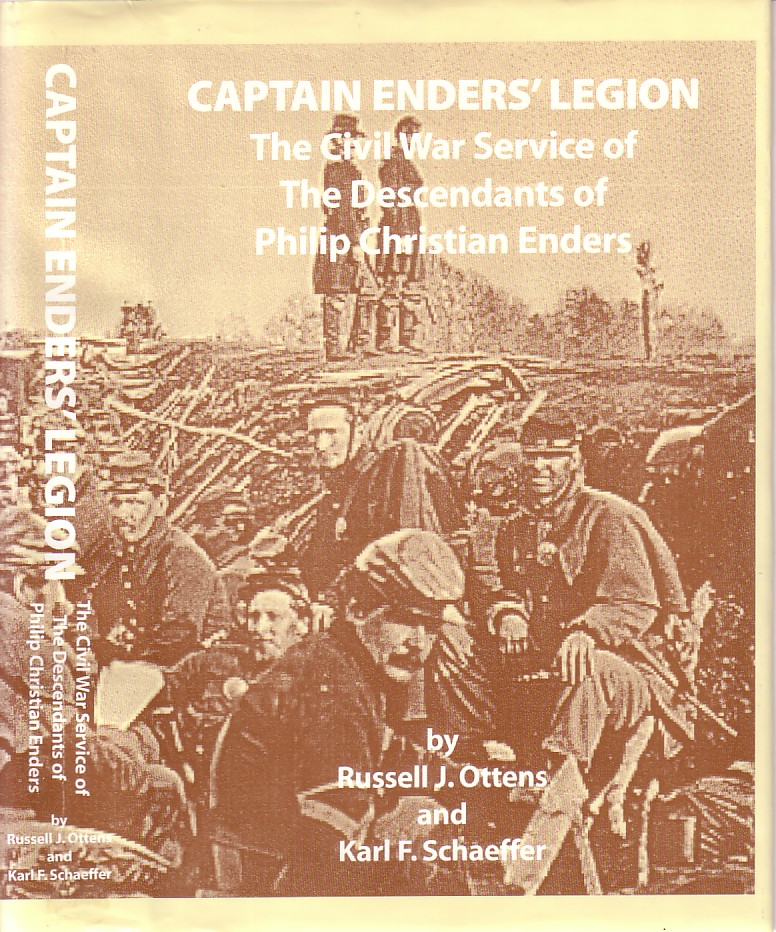Enders Family Civil War Veterans
Posted By Norman Gasbarro on November 19, 2010
One family with Dauphin County origins has a sure heads up on identifying and honoring its Civil War veterans for the upcoming Civil War Sesquicentennial.
In 1764, Capt. Philip Christian Enders and wife Anna emigrated from Germany and arrived in Philadelphia. Prior to his departure, Capt. Enders had served in the German Army during the Seven Years War and in the Royal Guard of Prince Henry of Nassau, and with the distinction of those experiences, he voluntarily joined the Pennsylvania Militia during the American Revolution. Capt. Enders settled in the Halifax, Pennsylvania, area. He and his wife raised 14 children.
Descendants of Capt. Enders, Russ Ottens and Karl Schaeffer, have carefully researched and thoroughly documented the Civil War service of 162 Enders family members who served on both sides of the war – those related by blood and marriage to the Captain and his sister Elizabeth Enders Fahnestock who came to America with him in 1764.
Our family members who fought for the North and the South served honorably. Not one of these brave men deserted and many suffered wounds, dismemberment, and chronic diseases. Some lived and died in Confederate prisons. This unforgiving war took the lives of twenty of our family from wounds and disease.
In their book, Captain Enders Legion: The Civil War Service of Descendants of Philip Christian Enders, Ottens and Schaeffer provide biographical sketches of each the veterans, a summary of their military service, and some genealogical information. There are some pictures. The book uses the same genealogical numbering convention that is used in the extensive Enders family genealogy, thus making it relatively easy to make the generational connections to Capt. Enders and his sister as well the the inter-relationships between and among the 162 veterans. Without the two-volume genealogy in hand, it is wise to download the first three generations of the Enders family (with numbers) from their web site.
One helpful fact given about each of the veterans is the burial location (where known). For those who wish to visit the grave on-line, a quick search on Find-a-Grave will most likely produce a picture of a grave marker – taken and uploaded by author Russ Ottens – and on occasion, a picture of the veteran.
As a biographical dictionary, the book is superb, as each of the profiles can stand alone. As a straight-through read, it can become quite repetitive. For example, if several family members served in the same regiment and company and at the same time, the authors boiler-plated the same text into each biography.
Nevertheless, the book is extremely valuable as most Lykens Valley families will find a connection to one or more of their ancestors. Throughout the book, names such as Hoover, Hoffman, Bowman, Chubb, Keiter, Lebo, Miller, Snyder, Woland and Zimmerman appear. A complete list of the biographical sketches can be found on the Enders web site. The list is also available arranged by regimental units.
It is also the only book of its kind chronicling all the known descendants of one of the Lykens Valley area pioneers who fought in the Civil War. Perhaps it will be an inspiration to other family historians to do the same as a project for the Civil War Sesquicentennial.
The book is being sold through the Enders web site with all profits going to maintain the family facilities at Enders Grove.
 ;
;



Comments